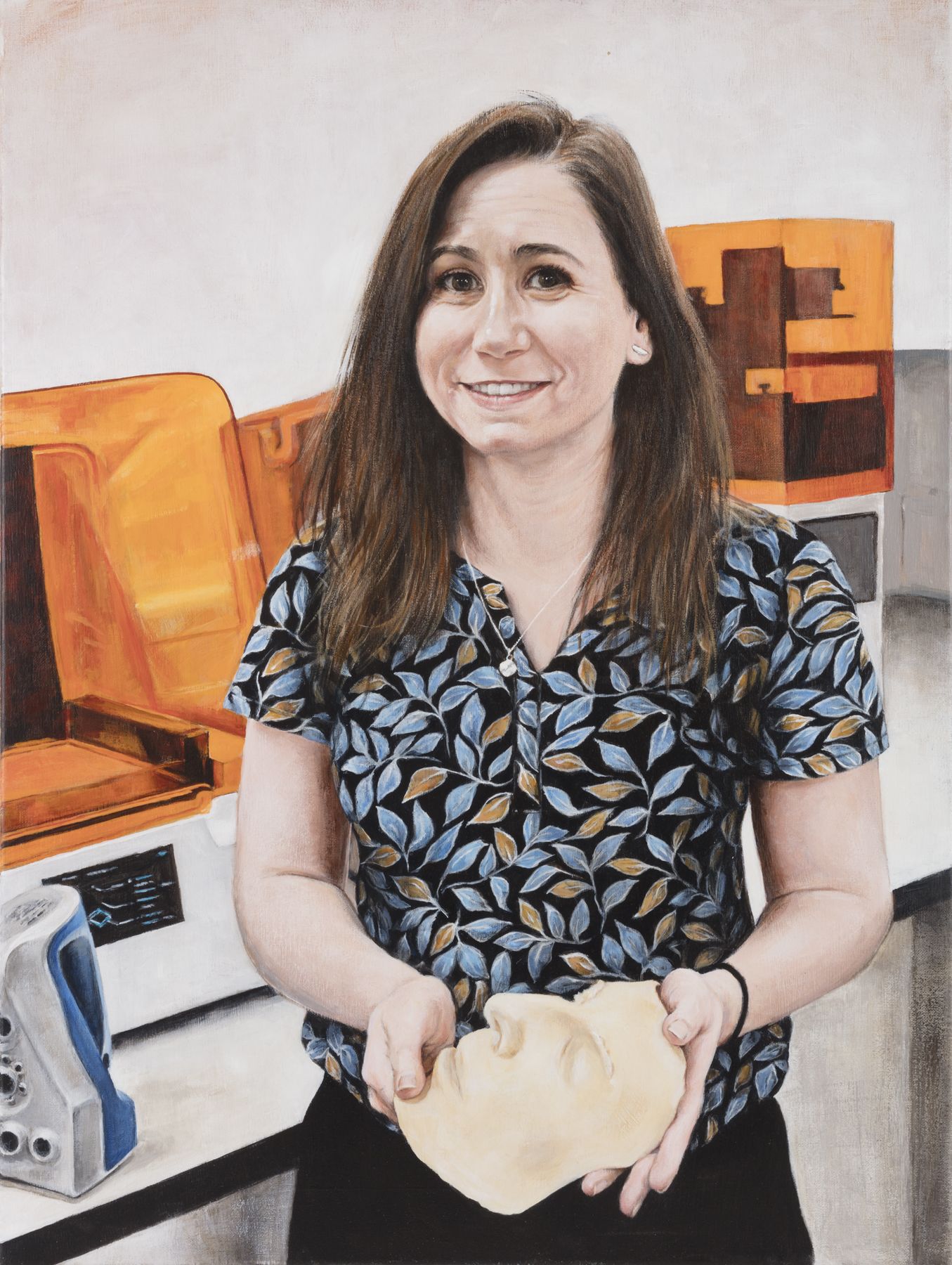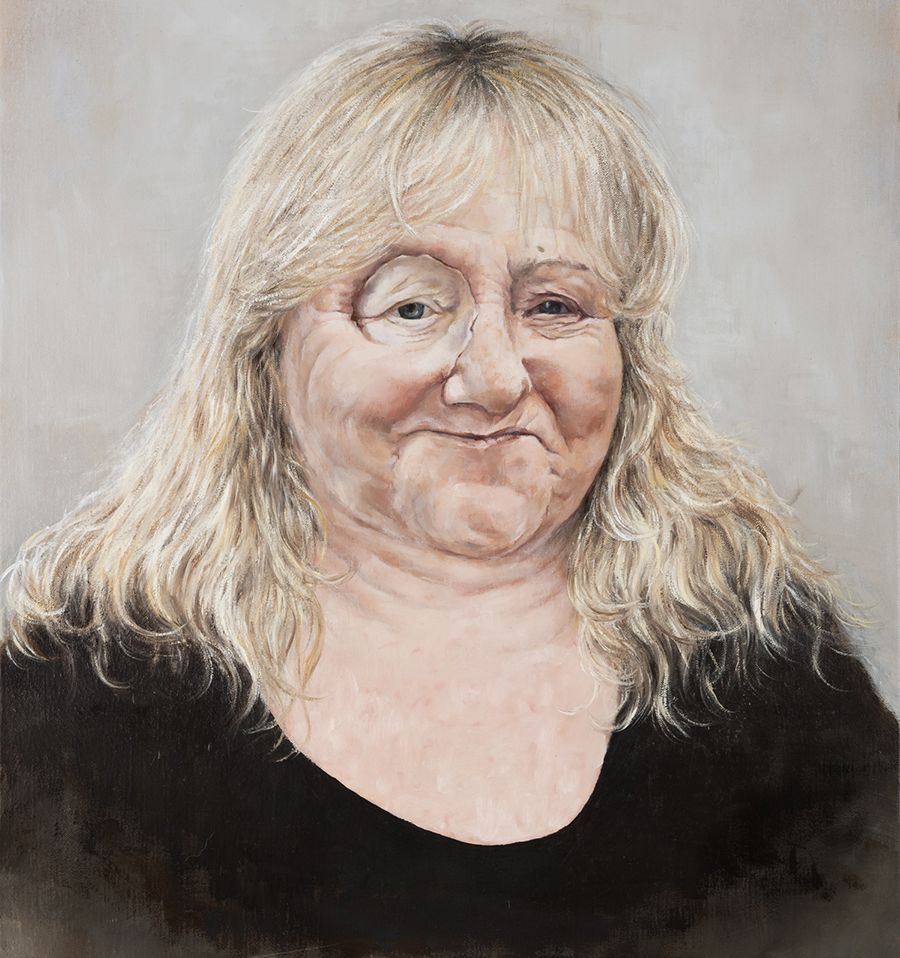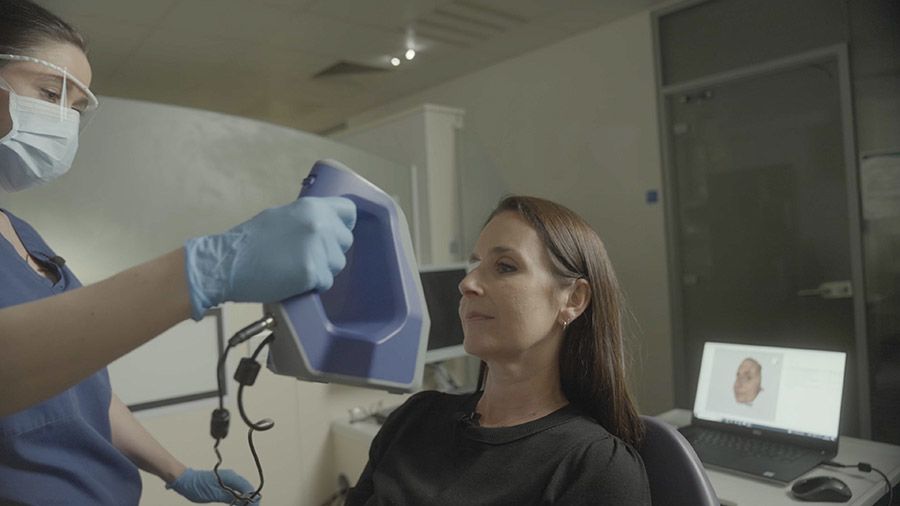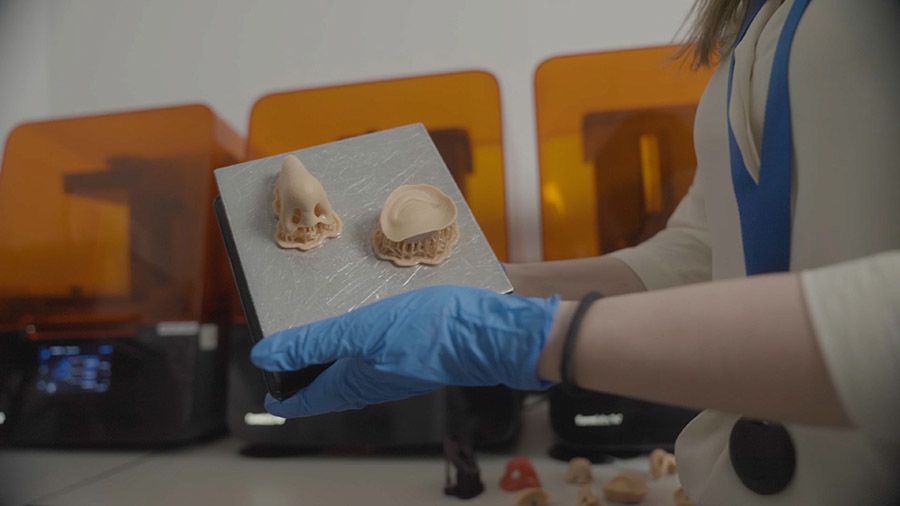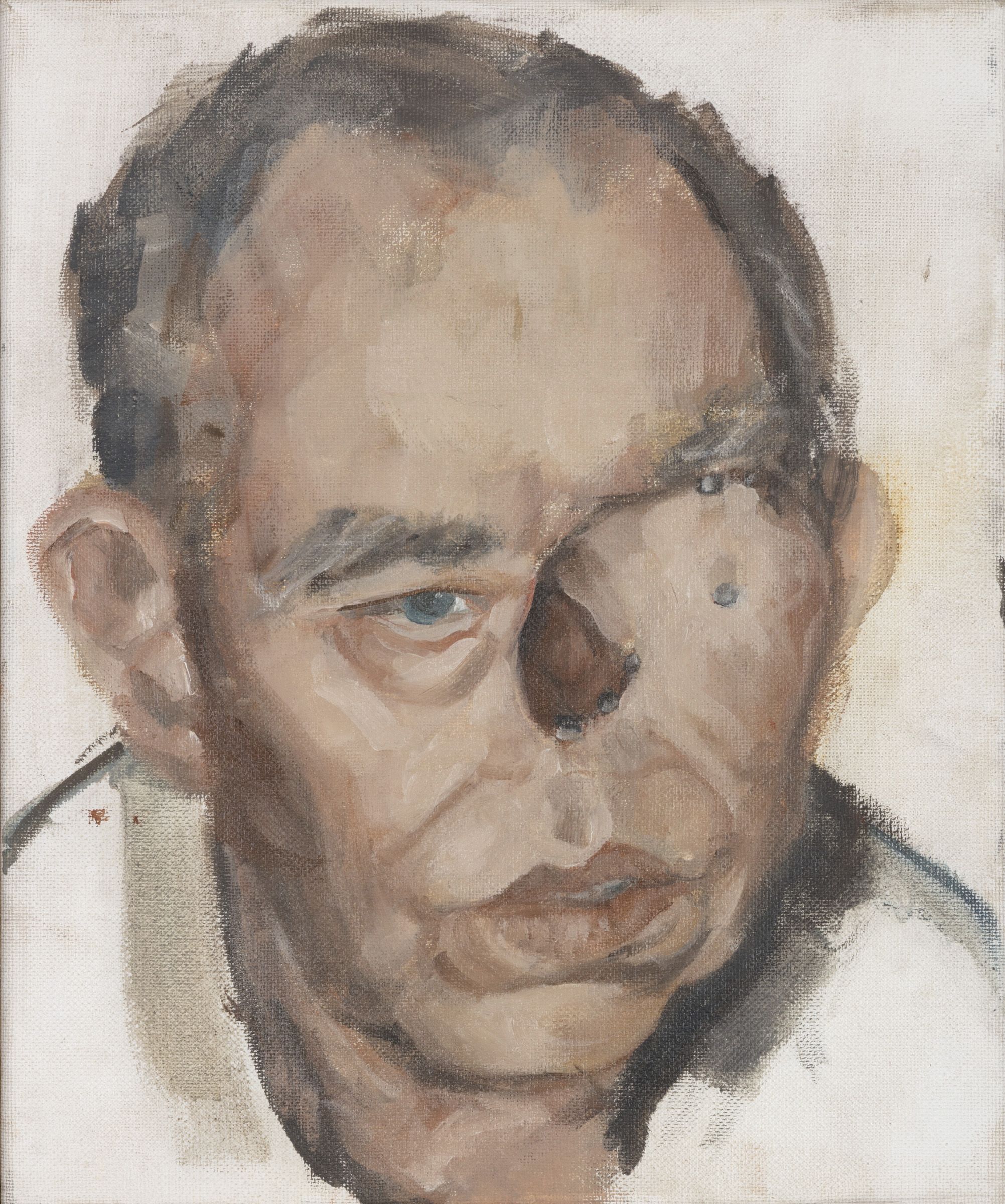I’m Still Me
Rachael Jablonski
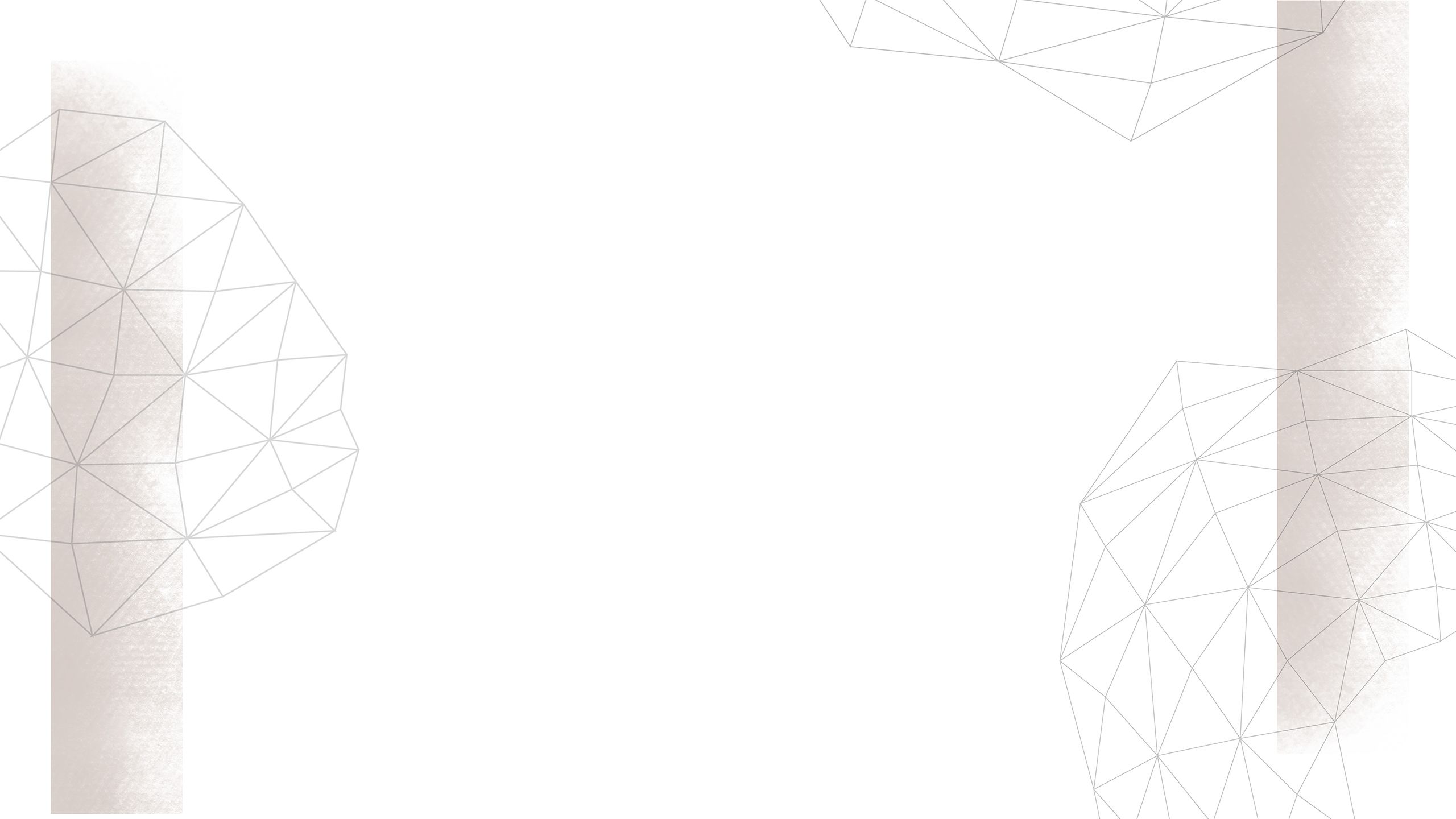
About Rachael
Portrait of Rachael by Brigid Brind (acrylic on canvas) 60 x 80 cm
Portrait of Rachael by Brigid Brind (acrylic on canvas) 60 x 80 cm
I am currently an NIHR Academic Clinical Lecturer and Specialty Registrar based at the Leeds School of Dentistry and Leeds Dental Institute.
I am in the latter stages of my clinical academic training in restorative dentistry which has a specific focus on the oral and dental rehabilitation of patients with head and neck cancer, developmental conditions, or facial trauma.
In restorative dentistry, we regularly work and collaborate within multidisciplinary teams, including head and neck surgeons and maxillofacial prosthetists.
Working as a clinical academic is a huge privilege. As a clinician, you gain an insight into unresolved healthcare needs and current challenges in rehabilitation processes. As an academic, you can use this insight to co-design and deliver patient centred research.
Rachael’s research
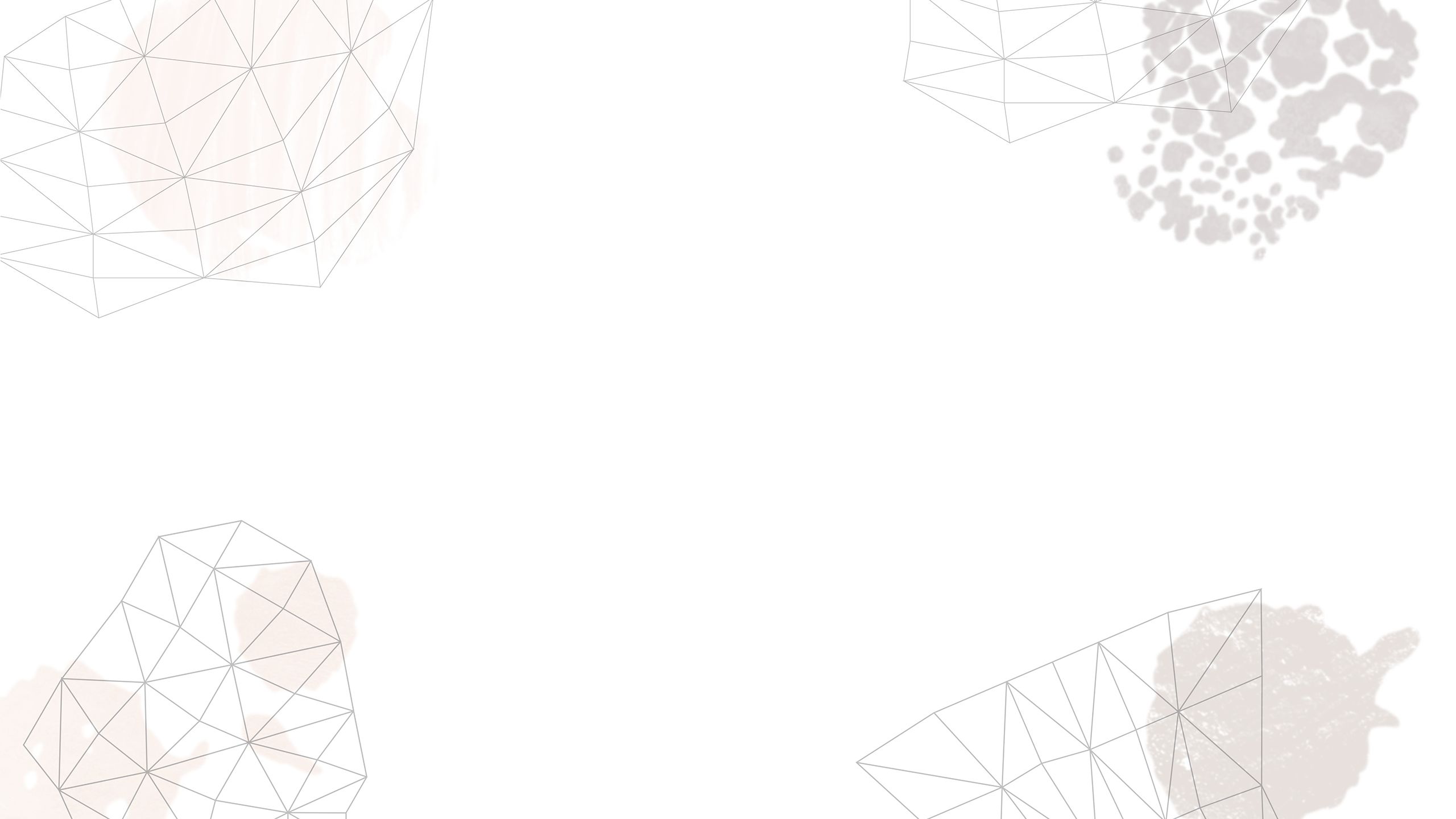
When I started to explore ideas for research, I worked with a dedicated and supportive group of patients who had previously received treatment for head and neck cancer. These Patient and Public Involvement and Engagement (PPIE) contributors brought their lived experience of wearing facial prostheses and helped identify priorities for the manufacturing process.
The three key areas that they wanted us to improve were:
- eliminating uncomfortable impressions
- improving aesthetic outcomes
- shortening the overall time of the rehabilitation process.
Co-creation with PPIE contributors has been essential to inform both the IMPRESSeD study and the I’m Still Me project, and to improve the relevance and impact of this work.
Portrait of Suzie Smiling by Brigid Brind (oil on linen) 51 x 64 cm. Suzie was IMPRESSeD’s first PPIE contributor.
Portrait of Suzie Smiling by Brigid Brind (oil on linen) 51 x 64 cm. Suzie was IMPRESSeD’s first PPIE contributor.
Digital prosthesis manufacturing

Making facial prostheses can be time, skill and resource intensive. It relies on the technical and artistic skills of a small number of highly trained professionals (maxillofacial prosthetists).
Digital manufacturing workflows may help support or replace steps in current manufacturing processes. For example, facial scanning could be a comfortable alternative to impressions, quickly capturing the shape and texture of a patient’s face.
The facial scanning process
The facial scanning process
Digital design might help produce more predictable outcomes and enable patients to contribute to the virtual design process. 3D printing could help reduce the manufacturing time for facial prostheses depending upon the techniques used.
There are still some limitations to digital manufacturing workflows but research can help us understand the indications, strengths and limitations of introducing new techniques and approaches.
The IMPRESSeD study

I developed and led the IMPRESSeD study during my NIHR Doctoral Fellowship. This project explored the digital manufacturing of facial prostheses from a clinical, patient and NHS perspective.
It has been a fantastic opportunity to collaborate with a dedicated and enthusiastic group of people who wanted to make a difference to the rehabilitation process, patient experiences and treatment outcomes.
3D printed prosthesis replicas
3D printed prosthesis replicas
Together, we explored the impact of digital innovations in the manufacturing of facial prostheses through a range of research methods including evidence synthesis, laboratory-based research, a multicentre feasibility trial, qualitative research, and early health economic modelling.
Research is important to help us find the best way to treat health conditions, improve patient care outcomes, and provide staff with different opportunities and variation in their work.
The final stage of her PhD involved the co-production of the I’m Still Me Public Engagement project to disseminate research findings and share the lived experience of people who wear facial prostheses.
The I’m Still Me project

“We should treat everyone fairly, regardless of visible facial differences.”
One of the key messages that comes through the I’m Still Me artworks and patient stories is one of face equality; that we should treat everyone fairly, regardless of visible facial differences, and appreciate everyone’s unique stories and valuable contributions.
Through I’m Still Me, we hope to share the lived experience of people who wear facial prostheses, make science more accessible to the wider community, highlight the significant difference patients make to research and public engagement, and illustrate some of the progress we are making together.
Study of Peter without Prosthesis by Alison Murdoch (oil on canvas) 25 x 30 cm. Peter was a member of the IMPRESSeD independent advisory group and and co-produced I’m Still Me.
Study of Peter without Prosthesis by Alison Murdoch (oil on canvas) 25 x 30 cm. Peter was a member of the IMPRESSeD independent advisory group and and co-produced I’m Still Me.
Tell us what you think
We would value your views on the I’m Still Me project.
Please take a few moments to complete our feedback form.
